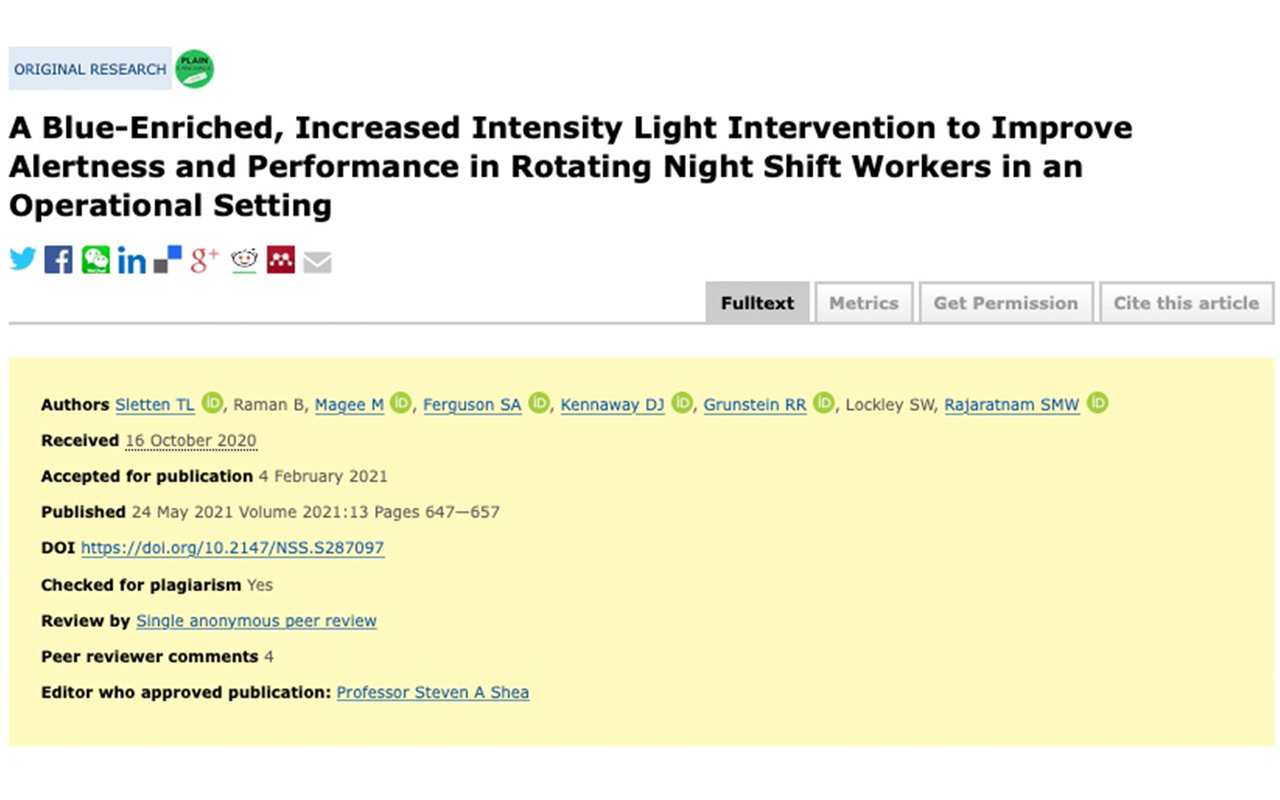A Blue-Enriched, Increased Intensity Light Intervention to Improve Alertness and Performance in Rotating Night Shift Workers in an Operational Setting
This study examined the efficacy of a lighting intervention that increased both light intensity and short-wavelength (blue) light content to improve alertness, performance and mood in night shift workers in a chemical plant.
For the first time, this study systematically tested in a within-subject design the efficacy of increased intensity and blue-enriched light exposure to enhance alertness in rapidly rotating night shift workers in an operational occupational setting. The study has shown that exposure to a higher intensity light with increased blue light content enhances subjective alertness and objective performance at the middle and end of the night shift. The team selected a dual-faceted lighting intervention (increased intensity and blue wavelength composition) to induce maximal improvements in alertness, and to be readily translated into practice. Improvements in alertness and performance seen in this study provide support for the potential benefits of light as a countermeasure against sleepiness during night shift in rapidly rotating shift workers. Findings suggest light interventions that capitalize on enhancing melanopsin-based responses may be an effective component of an occupational fatigue management program. Outcomes from this workplace intervention may inform future lighting standards to improve safety, productivity and wellbeing in operational settings. Further studies can examine the benefits of targeted lighting interventions in individuals most vulnerable to alertness impairment during night work.
___
© 2021 LED professional / Luger Research e.U.

